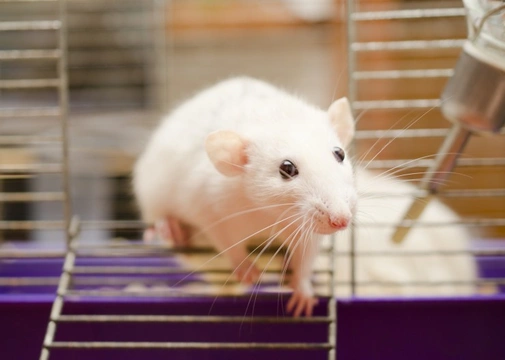
All about rat’s teeth and common dental problems
Rats make for excellent pets for people of all ages, and many of today’s adults remember having a cage of these lively, intelligent animals when they were younger, and aspire to sharing their enjoyment of pet rats with their own children too.
While rats and other small, caged furry pets are by no means as demanding as having a larger pet like a dog, rats still require daily care and interaction with their owners in order to keep them tame and avoid boredom, as well as a range of other things such as a large enough cage that is kept clean and hygienic, company in the form of other rats, and proper care and attention.
Learning about rats and their basic conformation and health is an important part of responsible rodent ownership too, and one of the most common areas that rats can face problems with is their dentition-or teeth.
In this article, we will talk about rat’s teeth in more detail, as well as looking at some of the more common dental problems that they can face. Read on to learn more.
Teeth and growth
Rats’ teeth grow throughout their lives, and if they are not fed an appropriate diet and given things to chew on, their teeth will grow overly long, to the point that they begin to dig into the sides of their face and make them unable to chew and function normally.
If this occurs, your rat’s teeth will need to be trimmed down to be comfortable and functional again, but this is not something that will generally happen to rats that are fed the appropriate diet, and provided with lots of suitable things to gnaw on.
Different types of teeth
Rats essentially have two different types of teeth in their mouths-Incisors, which are the four front teeth, two in the upper jaw and two in the other, and these are the teeth that grow throughout the life of the rat. The base of these teeth are under the gum line and extend into the sockets in the jaw, and the crown of these teeth are the ones that grow throughout the life of the rat.
The rest of a rat’s teeth are very small and cannot be seen easily without opening the rat’s mouth, and these teeth do not continue to grow once they have reached maturity.
Incisor malocclusions
By far the most common dental problem that faces pet rats and their owners is maloccluded incisors-this term refers to incisor teeth that do not bite together and meet neatly, which in rats, generally occurs because the teeth have become too long, as outlined above.
This is an issue that you will need to see your vet about, as maloccluded and overly long incisors will not simply resolve themselves, and require attention.
Essentially, there are two main ways in which your vet might deal with the issue-the most common of these is trimming the teeth down to a healthy length, and ensuring that your rat’s diet and the things that they are given to gnaw are appropriate to prevent the problem recurring again.
If the problem does keep cropping up, this may mean that your rat’s teeth will need trimming on a regular basis.
The alternative option for dealing with rat incisors that continually grow overly long and that cannot be managed with diet and gnawing material is to remove the problem teeth entirely, by extracting them from the roots. Without removal of the roots, the teeth will continue to grow, regardless of how often they are trimmed.
Whilst removing one or more of the incisors to resolve the problem might seem like a fairly heavy-handed approach, it is in some cases the best option, because repeated trimming of the teeth places pressure on them that can make the procedure uncomfortable for your rat, leading them to squirm and fight, which makes the whole process harder and more risky.
Additionally, trimming the teeth does place the teeth at slight risk of fracturing, which can be very painful and difficult to resolve.
Rats can and to eat and generally live quite happily with their incisors removed, after they have had time to recuperate from the surgery. As mentioned, the other teeth in the rat’s mouth-the ones that you generally won’t see unless you open your rat’s mouth and look for them-are perfectly suitable for chewing and digesting the type of diet that fancy rats are usually fed, and so this is often considered to be the better option.
Regardless of why your rat’s teeth are growing overly long, it is important to take them to the vet to get their advice and input sooner rather than later-malocclusions will not resolve themselves, and a rat with overly long teeth will have problems eating and even closing their mouth normally until the problem has been resolved.



